How to Grow an Avocado Plant: Essential Growth Techniques
- February 7, 2024
- 0 comment
Growing an avocado plant at home is not only a fun and rewarding gardening project but also a step towards a more sustainable lifestyle. By cultivating your own avocado tree, you can enjoy the freshest avocados right from your garden, knowing exactly how they were grown. This guide will walk you through the process, from selecting the right seed to harvesting your avocados.
Table of Contents
- Understanding Avocado Plants
- Common Types of Avocado Plants
- Climate and Soil Requirements
- Preparation Phase
- Germination Process
- Planting the Sprouted Seed
- Care and Maintenance
- Troubleshooting Common Issues
- Harvesting and Enjoying Your Avocados
- Conclusion
- FAQs
Understanding Avocado Plants
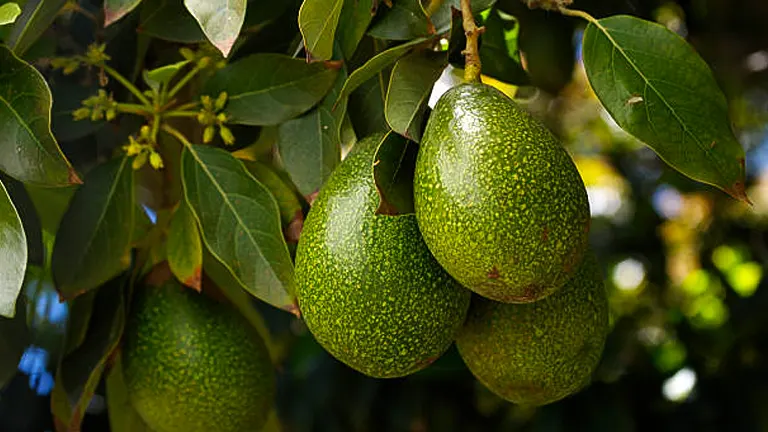
Avocado (Persea americana) is a versatile and beloved fruit, known for its rich texture and nutritional benefits. Before we dive into the cultivation process, it’s essential to understand a few basics about avocado plants. These evergreen trees hail from south-central Mexico and thrive in warm, temperate to tropical climates. There are many varieties, but the Hass and Fuerte avocados are among the most popular for home growers due to their taste and hardiness.
Common Types of Avocado Plants
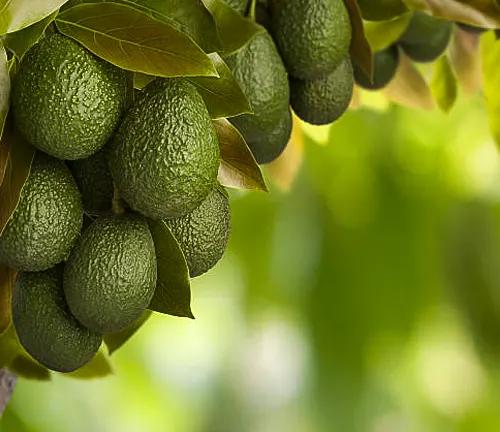
Hass: The Hass avocado is the most widely known and cultivated avocado in the world. It features a distinctive pebbly skin that turns from green to a dark purplish-black as it ripens. The fruit is oval-shaped with creamy, rich flesh that has a nutty flavor. Hass avocados are available year-round, thanks to staggered harvesting from various regions.
- Origin: California, USA
- Type: Guatemalan and Mexican hybrid
- Climate Preference: Thrives in both Mediterranean and subtropical climates.
- Ripening Time: Mid-season
Fuerte: The Fuerte avocado is known as a “green skin” variety, which doesn’t change color as it ripens, remaining a vibrant green. The fruit is pear-shaped with smooth, thin skin, and has a slightly less oily texture than Hass, but still offers a rich, creamy flavor. Fuerte avocados are typically available from late fall through spring.
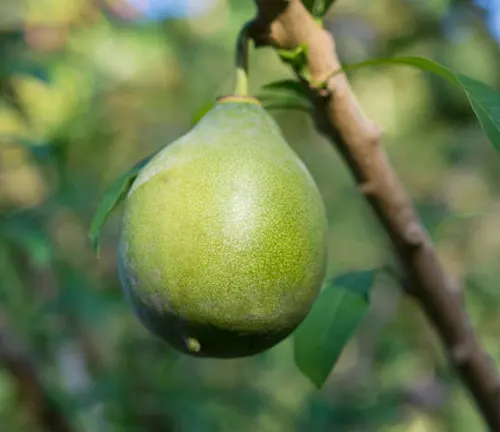
- Origin: Puebla, Mexico
- Type: Mexican and Guatemalan hybrid
- Climate Preference: Best suited to mild, subtropical climates.
- Ripening Time: Early season
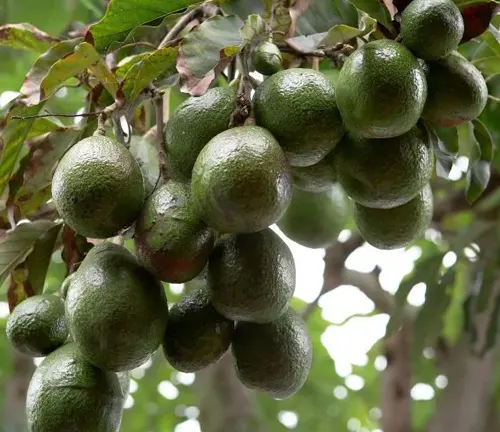
Bacon: Bacon avocados have smooth, thin skin that remains green when ripe. The fruit is oval to round with light yellow to green flesh, offering a lighter flavor compared to Hass. Bacon avocados are known for their excellent cold tolerance, making them suitable for cooler regions.
- Origin: California, USA
- Type: Mexican
- Climate Preference: Performs well in cooler climates compared to other varieties.
- Ripening Time: Early season
Reed: Reed avocados are large, round fruits with a thick, green skin that remains green when ripe. The flesh is smooth, creamy, and has a rich flavor, similar to Hass but with a slightly sweeter taste. Reed avocados are typically available in the summer months and are known for their long shelf life.
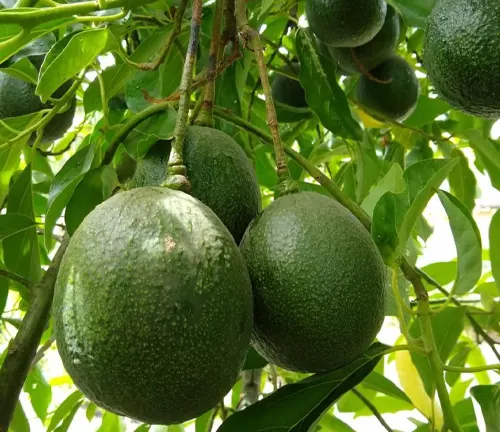
- Origin: California, USA
- Type: Guatemalan
- Climate Preference: Prefers mild to warm climates.
- Ripening Time: Mid to late season

Pinkerton: Pinkerton avocados are elongated with a slightly pebbled, green skin that remains green when ripe. They are known for their high flesh-to-seed ratio, with creamy, rich-tasting flesh. Pinkerton trees are prolific producers, and the fruits have a long harvesting window.
- Origin: California, USA
- Type: Guatemalan
- Climate Preference: Thrives in subtropical climates.
- Ripening Time: Early to mid-season
Wurtz (or “Little Cado”): Wurtz avocados are small to medium in size with a smooth, thin green skin. The flesh is creamy and flavorful, and the variety is particularly noted for its dwarf growth habit, making it an excellent choice for container growing or small gardens. Wurtz trees can bear fruit within 1-2 years of planting under optimal conditions.
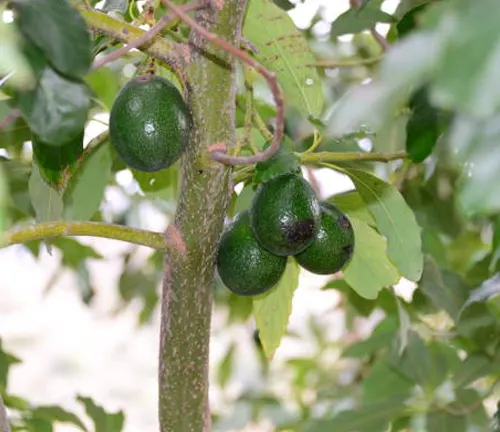
- Origin: California, USA
- Type: Hybrid (Guatemalan and West Indian)
- Climate Preference: Suitable for a wide range of climates, including both subtropical and mild temperate areas.
- Ripening Time: Early to mid-season
Each avocado variety has its unique characteristics, making them suitable for different climates, culinary uses, and personal preferences. Whether you’re looking for avocados to grow in a home garden or to enjoy their diverse flavors, there’s a type that fits every need.
Climate and Soil Requirements
| Aspect | Requirements |
|---|---|
| Climate | Avocado plants thrive in warm, temperate to tropical climates with moderate temperatures. Ideal conditions include temperatures ranging from 60°F to 85°F (15°C to 29°C). They are sensitive to frost and cold winds, requiring protection or suitable microclimates in cooler regions. Regions with a distinct dry season and wet season are often suitable, as long as irrigation is available during dry periods. |
| Sunlight | Require full sun exposure for optimum growth and fruit production. A minimum of 6 hours of direct sunlight daily is essential. Young plants may need light shade to protect them from intense, direct sunlight during the hottest parts of the day. |
| Soil Type | Prefer well-draining, fertile soil with a pH level between 6 and 7. The soil should be rich in organic matter to retain moisture and nutrients, yet drain well enough to prevent waterlogging, which can lead to root rot. Avocado plants do not fare well in heavy, clay-rich soils without adequate drainage improvements. |
| Soil Drainage | Excellent drainage is critical to avoid root rot diseases, particularly Phytophthora root rot. Incorporating organic matter, such as compost or well-rotted manure, can improve soil structure and drainage. In areas with poor natural drainage, consider planting avocado trees on a mound or raised bed to enhance water runoff. |
| Wind Protection | Avocado trees can be susceptible to wind damage, especially in areas prone to strong winds. Windbreaks or shelterbelts can help protect young trees and reduce water loss from leaves. Strategic planting near natural barriers or buildings can also offer some protection. |
| Watering Needs | While established avocado trees are somewhat drought-tolerant, they require regular, deep watering to develop a strong root system and support fruit production. The watering frequency depends on the climate, season, and soil type, aiming to keep the soil consistently moist but not waterlogged. During the growing season, increase watering, especially in dry conditions, and reduce in the cooler months to prevent overwatering. |
| Fertilization | Regular feeding with a balanced fertilizer is important for the growth and health of avocado plants. Young trees benefit from a nitrogen-rich fertilizer to promote growth, while bearing trees require a balanced N-P-K (Nitrogen-Phosphorus-Potassium) ratio to support fruit production. Apply according to the product instructions, typically in the early spring and late summer. Additionally, periodic applications of trace elements, such as zinc, iron, and boron, may be beneficial depending on soil tests. |
The successful cultivation of avocado plants hinges on understanding and meeting specific climate and soil requirements, underscoring the importance of environmental compatibility for optimal growth and fruit production. Optimal conditions include warm temperatures, ample sunlight, well-draining fertile soil with a neutral pH, and effective wind protection. Additionally, careful attention to irrigation and fertilization practices is crucial to address the plant’s moisture and nutritional needs without causing stress or disease.
By adhering to these guidelines, gardeners and commercial growers alike can enhance the health and productivity of avocado plants, ultimately contributing to the successful cultivation of this valuable and nutritious fruit. Ensuring these conditions are met will not only promote the well-being of the avocado plants but also optimize yield and fruit quality, making it a rewarding endeavor for those committed to its cultivation.
Preparation Phase
Materials Needed:
- A ripe avocado to obtain the seed
- A pot or container with drainage holes, approximately 8-10 inches in diameter
- Well-draining potting mix, preferably a mix designed for citrus or avocado plants
- Water
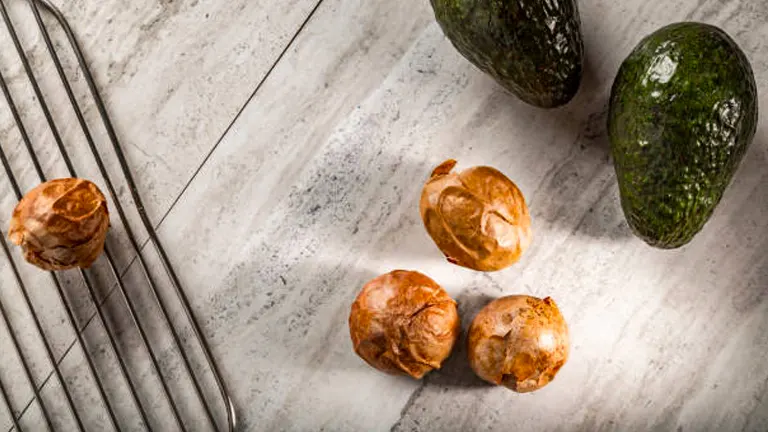
Selecting the Right Avocado Seed: Choose a ripe avocado from your local grocery store or market. The seed inside should be healthy and intact. To extract the seed, cut around the avocado lengthwise and twist to open. Gently remove the seed without causing damage to its brown skin, which protects the embryo inside.
Germination Process
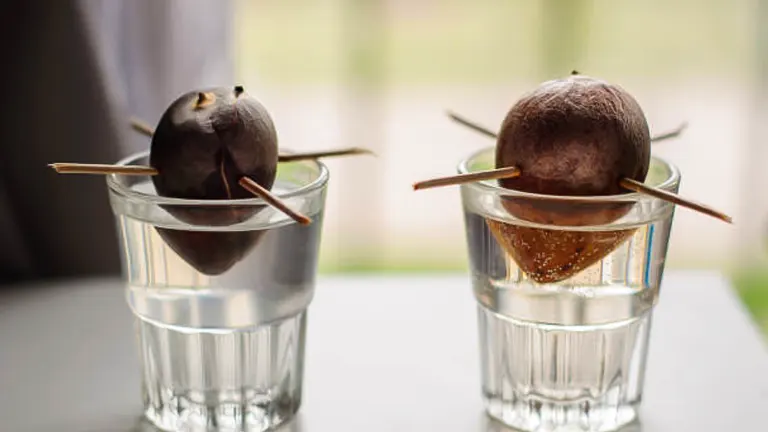
Germinating an avocado seed is the first step toward growing your plant. There are two popular methods to start the germination process: the water immersion method and the soil planting method.
Seed Preparation:
- Carefully wash the seed under lukewarm water to remove any flesh, being cautious not to remove the brown skin. Identify the top (narrow end) and bottom (broader end) of the seed. Roots will emerge from the bottom, while the sprout will grow from the top.
Germination Methods:
- Water Immersion Method: Insert three to four toothpicks into the sides of the seed, spacing them evenly. Suspend the seed over a glass of water, ensuring the bottom half is submerged. Place the glass in a warm, well-lit area, avoiding direct sunlight.
- Soil Planting Method: Fill a small pot with moist well-draining potting mix. Plant the seed with the broader end down, ensuring the top half of the seed is exposed above the soil surface. Keep the soil consistently moist and place the pot in a bright, warm location.
- Germination Time Frame: Whether you choose water immersion or soil planting, germination can take anywhere from 4 to 8 weeks. Patience is crucial during this stage. Look for signs of rooting and the initial sprout, indicating successful germination.
Planting the Sprouted Seed
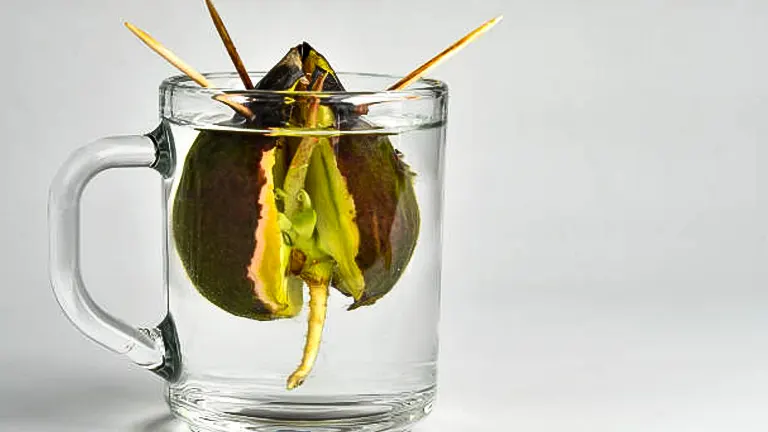
After your avocado seed has germinated and you observe a sprout and roots, it’s time to plant it in soil. This step is pivotal for the growth and health of your avocado plant.
Selecting the Right Pot and Soil:
- Pot: Choose a pot with drainage holes that is about 12-15 inches in diameter to accommodate the growing root system. As the plant grows, repotting may be necessary to ensure it has enough space.
- Soil: Use a well-draining potting mix, ideally one that’s specifically formulated for avocados or citrus trees, as these mixes ensure proper drainage and nutrient balance. A pH level between 6 and 7 is optimal.
Planting Procedure:
- Preparing the Pot: Begin by filling your selected pot with the chosen potting mix, leaving a few inches of space from the rim. This space is necessary to prevent overflow during watering.
- Positioning the Seed: Carefully create a hole at the center of the soil, ensuring it is deep enough to accommodate the avocado seed’s entire root system. This depth is critical to ensure that the roots have sufficient space to expand and anchor the plant.
- Planting the Seed: With gentle precision, place the avocado seed in the prepared hole, making sure that the sprout is pointing upwards and remains above the soil’s surface. This orientation is vital for the sprout’s development into a healthy stem and leaves.
- Securing the Seed: Gently fill in the hole with soil, tamping it down lightly around the seed to eliminate air pockets and provide stability. It is important to support the seed in an upright position, ensuring it remains securely planted.
- Watering: Thoroughly water the newly planted seed, saturating the soil to ensure even moisture distribution. The goal is to maintain a consistently moist environment without causing waterlogging, which could be detrimental to the seedling’s health. Proper watering practices are paramount to facilitate initial root development and subsequent growth phases.
Care and Maintenance
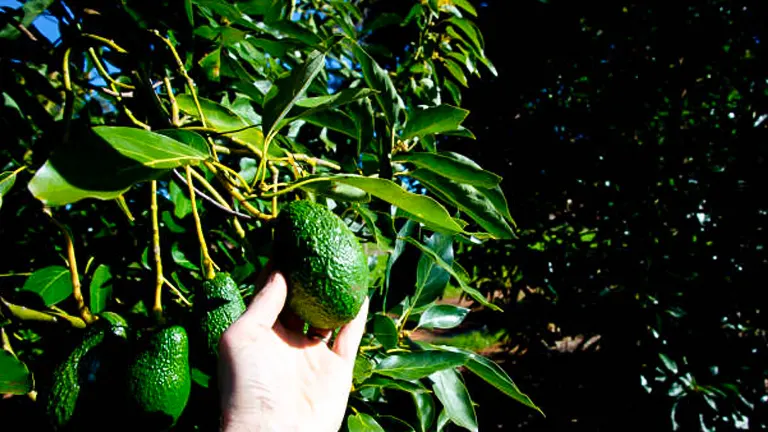
For your avocado plant to thrive, it needs consistent care and attention, particularly in terms of watering, sunlight, feeding, and pruning.
Watering:
- Avocado plants prefer evenly moist soil. Water when the top inch of soil becomes dry to the touch, reducing watering in the winter months.
- Ensure good drainage to prevent root rot, a common issue in waterlogged conditions.
Sunlight:
- Avocado plants require ample sunlight to grow. Place your plant in a location where it can receive at least 6 hours of direct sunlight daily. If growing indoors, a south-facing window is ideal, supplemented with grow lights if necessary.
Feeding:
- Fertilize your avocado plant every 2-3 months with a balanced, water-soluble fertilizer. During the growing season, you can opt for a fertilizer with a higher nitrogen content to promote foliage growth.
Pruning:
- Pruning helps manage the size of your plant and encourages a bushier growth. When your plant reaches about 1 foot in height, trim back to 6 inches to encourage branching. Always use clean, sharp pruning shears to make clean cuts.
Troubleshooting Common Issues
Despite the best care, your avocado plant may encounter some issues. Here are common problems and how to address them:
Pests:
- Aphids and spider mites are common pests that can affect avocado plants. Rinse your plant with a gentle water spray to dislodge pests, or use an appropriate insecticidal soap.
Diseases:
- Root rot from overwatering is a significant threat. Ensure your pot has excellent drainage and monitor your watering schedule closely.
- Leaf spots can be a sign of fungal infections. Improve air circulation and reduce leaf wetness to manage these issues.
Growth Problems:
- If your avocado plant is not growing as expected, consider whether it’s getting enough light, water, and nutrients. Adjust care accordingly.
- Patience is key with avocado plants, especially when grown from seed. It can take several years to mature and possibly bear fruit.
Harvesting and Enjoying Your Avocados
The journey from seed to fruit is a long one for avocado trees, often requiring patience and careful attention to care. When your avocado tree finally bears fruit, knowing the right time to harvest can ensure you enjoy the best taste and quality.
Indicators of Maturity:
- Avocado fruits do not ripen on the tree. They mature on the tree but only start to ripen once picked.
- A mature avocado typically changes in color, depending on the variety. For example, Hass avocados turn from green to a darker, purplish-black hue.
- Gently squeezing the fruit can also indicate readiness. If the avocado yields to slight pressure, it’s likely ready to harvest. However, it’s better to pick one and let it ripen off the tree as a test.
Harvesting Technique:
- Use a clean, sharp pair of pruning shears or a knife. Cut the avocado stem close to the fruit, leaving a short stem attached.
- Handle the fruit gently to avoid bruising, which can affect the ripening process.
Enjoying Your Avocado:
- Once harvested, store your avocados at room temperature until they ripen. This can take anywhere from a few days to over a week.
- To accelerate ripening, place the avocado in a paper bag with an apple or banana. The ethylene gas produced by these fruits helps speed up the ripening process.
- Ripe avocados can be kept in the refrigerator for several days to slow down further ripening.
Conclusion
Growing an avocado plant from seed is a rewarding process that teaches patience, care, and the joys of gardening. While it may take years for your plant to bear fruit, the experience of nurturing a plant from the very beginning is invaluable. Remember, the key to a healthy avocado plant lies in consistent care—proper watering, ample sunlight, regular feeding, and occasional pruning. Whether your avocado plant becomes a lush indoor companion or a fruitful outdoor tree, the journey of growing it is sure to be a fulfilling one.
FAQs
- Can I grow an avocado plant from a store-bought avocado seed?
Yes, you can. It’s entirely possible to grow an avocado plant from a seed of a store-bought avocado. Keep in mind that it requires patience, as plants grown from seeds may take several years to bear fruit, if at all. Clean and prepare the seed properly for germination. - How long does it take for an avocado seed to germinate?
Germination times can vary, but typically, an avocado seed will start to sprout within 2 to 6 weeks under the right conditions. Make sure the seed is constantly moist and in contact with water (if using the water method) or soil to encourage the sprouting process. - Do I need a garden to grow an avocado plant, or can it thrive indoors?
Avocado plants can be grown indoors, provided they have enough sunlight and space. They can get quite large, so a south-facing window and regular pruning are recommended to manage their growth indoors. However, indoor avocado plants may not fruit as easily as those grown in optimal outdoor conditions. - How often should I water my avocado plant?
The frequency of watering your avocado plant depends on several factors, including the plant’s size, the container’s size, and the environment. Generally, the soil should be kept moist but not waterlogged. Water when the top inch of soil feels dry to the touch, adjusting as needed based on the plant’s response and environmental conditions. - What is the best fertilizer for an avocado plant?
A balanced, slow-release fertilizer formulated for fruit trees is ideal for avocado plants. Look for fertilizers with a balanced N-P-K ratio (Nitrogen-Phosphorus-Potassium) and consider incorporating organic matter like compost into the soil for additional nutrients. - Can avocado plants handle cold weather?
Avocado plants are sensitive to cold and frost. Some varieties are more cold-hardy than others, but generally, temperatures below freezing can damage or kill an avocado plant. Protection or moving the plant indoors during cold snaps is essential in cooler climates. - How do I know when to transplant my avocado plant to a larger pot?
Signs that your avocado plant needs a larger pot include roots growing out of the drainage holes, slowed growth, or the plant becoming top-heavy. Transplanting is best done in the spring or early summer to give the plant time to establish in its new pot before winter. - Why are the leaves on my avocado plant turning brown?
Brown leaves can be caused by several factors, including under-watering, over-watering, salt buildup from tap water, or nutrient deficiencies. Check the soil moisture to rule out watering issues first, then consider flushing the soil with distilled water to remove excess salts and adjusting your fertilization routine.
Growing an avocado plant from a seed is a simple and fulfilling project that brings a bit of greenery and potentially, fresh fruit into your home. With just a bit of patience, regular watering, and enough sunlight, you can nurture a small seed into a thriving avocado tree. This process not only adds a lush element to your space but also connects you with the cycle of growth and nature’s generosity, all starting from the palm of your hand.

Benjamin Brooks
Forestry AuthorGreetings! I'm Benjamin Brooks, and my journey over the past 15 years has revolved around the fascinating realms of content creation, expertise in snow clearing, and the intricate world of lumberjacking and landscaping. What began as a simple curiosity about the natural world and heavy machinery has evolved into a passionate profession where my love for crafting words intertwines seamlessly with my lumberjacking and garden skills.


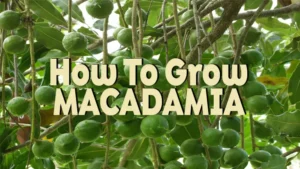




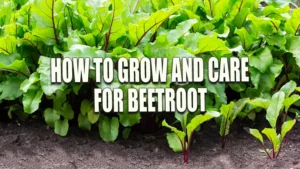





Leave your comment